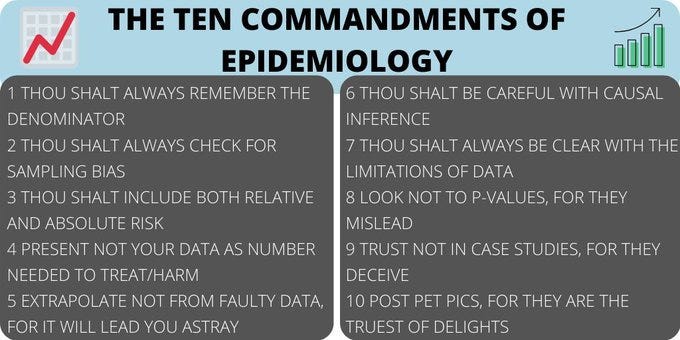# Understanding the Rise of COVID-19 Cases Among the Vaccinated
Written on
Chapter 1: The Vaccine Dilemma
As the global community gradually transitions from the chaos of the pandemic towards a post-vaccination era, a pertinent question arises: Why are we witnessing an increase in COVID-19 cases among those who have been vaccinated? Shouldn't vaccination provide adequate protection after receiving the shot?

In many regions, data shows a concerning trend: the majority of recent coronavirus infections are occurring in individuals who are fully vaccinated. This observation seems to contradict the established effectiveness of vaccines, which can prevent up to 95% of symptomatic cases. What explains this phenomenon? The answer lies in understanding a concept known as the base rate fallacy and remembering the fundamental principle of epidemiology: Always consider the denominator.
Section 1.1: The Base Rate Fallacy Explained
The base rate fallacy occurs when we focus on specific data points without considering the overall context. A classic example is the relationship between seatbelt use and fatalities in car accidents. While statistics may indicate that most individuals who die in crashes were wearing seatbelts, this can be misleading if we ignore the fact that a vast majority of people actually wear them.

In the U.S., approximately 90.3% of drivers use seatbelts. If we analyze a hypothetical scenario where 100,000 drivers have 100 fatalities in a year, we find that out of those fatalities, a significant proportion were indeed wearing seatbelts. This context highlights the life-saving benefits of seatbelts rather than suggesting they are ineffective.
Subsection 1.1.1: Applying the Concept to Vaccines
Now, let's apply this logic to COVID-19 vaccinations. Initially, when vaccination rates were low, most infections occurred among the unvaccinated. However, as vaccination rates increase, the proportion of infections among vaccinated individuals inevitably rises. This does not imply that vaccines are ineffective; rather, it’s a predictable outcome of high immunization rates coupled with vaccines that do not offer absolute protection.
Chapter 2: The Case Study of Vaccination Rates
Consider a scenario with 100,000 individuals, where 95% have received vaccinations with an efficacy rate of 93.7%. If the risk of contracting COVID-19 is 1%, the expected cases would break down as follows:
- In the unvaccinated group (5,000 individuals): 50 cases.
- In the vaccinated group (95,000 individuals): 60 cases.
Thus, even with high vaccination efficacy, the sheer number of vaccinated individuals leads to a higher number of cases among them, simply due to mathematics.
In the context of Israel, where around 90% of individuals over 60 are vaccinated, data reveals that 90% of recent infections in that age group are among those who are vaccinated. This statistic can mislead observers into thinking vaccines lack effectiveness, yet it actually reflects a protective efficacy of at least 41% against severe illness.
The situation in Israel further illustrates the importance of context. With a national vaccination rate of approximately 62%, one might mistakenly conclude that vaccines are not providing adequate protection. However, a closer examination of age-specific data reveals a more nuanced reality, emphasizing the need to control for multiple factors influencing exposure risk.
Bottom Line: The Value of Vaccination
Vaccines remain highly effective, even against more aggressive variants of the coronavirus. Robust analyses indicate that receiving two doses can reduce the risk of contracting COVID-19 by 75% to 94%.
While it is true that vaccinated individuals can still contract the virus, it is essential to recognize that the majority of COVID-19 cases in a highly vaccinated population will naturally occur among the vaccinated. This is simply a mathematical certainty.
Despite the occurrence of breakthrough infections, the evidence strongly supports the notion that vaccines offer substantial protection. The likelihood of hospitalization, ICU admission, or death significantly decreases after just one dose and continues to improve after the second.
In summary, vaccines are effective, and concerns about high case numbers among vaccinated individuals often stem from a misunderstanding of the base rates. If you have not yet been vaccinated, it is crucial to seek out vaccination opportunities.
Remember, the statistics reflect not only the safety and efficacy of vaccines but also the vital role they play in public health.